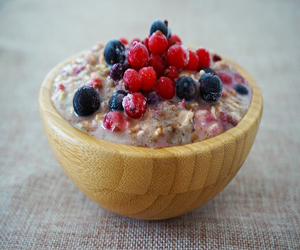


Nature's Flavorful Treasures
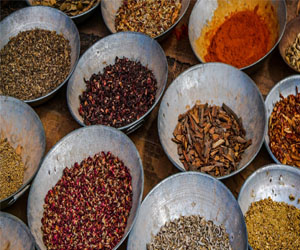
Aromatic herbs, with their tantalizing scents and vibrant flavors, are an essential component of cuisines around the world. These culinary gems not only enhance the taste of dishes but also provide numerous health benefits. From basil to thyme, let's delve into the world of aromatic herbs and discover their remarkable qualities.
Flavorful Enhancements: Aromatic herbs are nature's gift to chefs and home cooks alike. They elevate the taste of dishes, transforming the ordinary into the extraordinary. Basil, with its sweet and slightly peppery notes, is the star of Italian cuisine, lending its distinctive taste to dishes like pesto. Cilantro's fresh, citrusy flavor brightens up Mexican and Asian dishes, while rosemary's earthy, pine-like aroma complements roasted meats and potatoes. Aromatic herbs like mint and parsley are prized for their ability to add a burst of freshness to salads and desserts.
Health Benefits: Beyond their culinary appeal, aromatic herbs offer an array of health benefits. They are often rich in antioxidants, vitamins, and minerals. For instance, basil contains essential nutrients like vitamin K and iron, which promote bone health and support overall well-being. Rosemary is known for its anti-inflammatory properties and its potential to enhance memory and concentration. Mint aids in digestion and alleviates symptoms of indigestion and irritable bowel syndrome. The list of health benefits associated with aromatic herbs is extensive, making them an integral part of a balanced diet.
Aromatherapy: Aromatic herbs are not confined to the kitchen; they have a role to play in aromatherapy as well. Essential oils extracted from these herbs are used for their therapeutic properties, promoting relaxation, stress relief, and overall emotional well-being. Lavender, for example, is known for its calming scent, often used to induce sleep and reduce anxiety. Peppermint essential oil is employed to alleviate headaches and soothe muscle pain. Aromatherapy with aromatic herbs is a holistic approach to wellness that harnesses the power of nature's fragrant treasures.
Cultural Significance: Aromatic herbs hold cultural significance in various regions. In Mediterranean cuisine, oregano, thyme, and basil are omnipresent, enhancing the flavors of dishes like pizza and pasta. In Indian cooking, coriander and curry leaves are essential for curries and spice blends. In Thai cuisine, lemongrass, basil, and cilantro are iconic herbs that contribute to the vibrant and complex flavors of the dishes.
Cultivation And Culinary Exploration: Aromatic herbs are relatively easy to grow, whether in a backyard garden, windowsill pots, or indoor herb gardens. Their growth is a delightful journey for those who embrace gardening. Exploring these herbs in your own cooking opens up endless possibilities for creativity and flavor experimentation. They can be used in a wide range of culinary creations, from soups and sauces to beverages and desserts.
Aromatic herbs are not just condiments; they are the aromatic soul of culinary traditions and a source of well-being. Their flavors and fragrances have the power to transport us to far-off places and provide us with a wealth of nutritional and health benefits. By incorporating aromatic herbs into our daily lives, we can savor the diversity of cuisines, elevate our cooking, and promote our overall health and happiness. These herbs are truly nature's flavorful treasures, inviting us to explore the world of taste and aroma.
Crafting The Perfect Liquid Symphony
 Latte Art: A Visual Symphony
Latte Art: A Visual Symphony
Latte art, the most recognizable form of espresso artistry, is a visual symphony that unfolds in your cup. Baristas use steamed milk to create intricate designs on the surface of espresso-based beverages, such as lattes and cappuccinos. Hearts, tulips, rosettes, and swans are just a few of the designs that baristas can craft with a steady hand and a keen eye.
Creating latte art is a delicate process that requires the perfect balance of milk and espresso. The milk must be steamed to the right temperature and frothed to achieve the ideal microfoam. The barista then pours the milk into the espresso, using a combination of pouring technique and wrist movement to shape the design. The result is not only visually stunning but also enhances the overall coffee-drinking experience.
Espresso Machine Mastery
Behind every visually striking latte art design lies a skilled barista who has mastered the espresso machine. The espresso machine, with its precise control over temperature and pressure, is the conductor's wand in this symphony of flavors and aesthetics. Baristas adjust variables such as grind size, shot duration, and water temperature to ensure the espresso shot's flavor is in perfect harmony with the milk and the art that adorns it.
The Intersection Of Science And Art
Espresso artistry is a unique intersection of science and art. Baristas must understand the chemical reactions that occur during coffee extraction, the physics of milk frothing, and the principles of fluid dynamics.


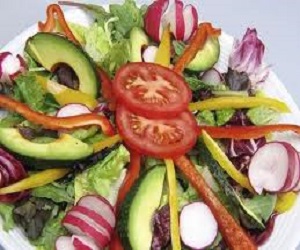
Celiac Disease, Gluten Sensitivity, And Wheat Allergies
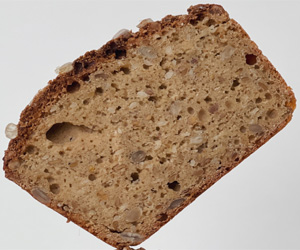 Common symptoms of celiac disease include gastrointestinal issues like diarrhea, bloating, and abdominal pain, as well as fatigue, anemia, and skin rashes. However, it's important to note that some individuals with celiac disease may experience no noticeable symptoms, making diagnosis challenging. Long-term complications can include malnutrition, osteoporosis, and an increased risk of other autoimmune diseases.
Common symptoms of celiac disease include gastrointestinal issues like diarrhea, bloating, and abdominal pain, as well as fatigue, anemia, and skin rashes. However, it's important to note that some individuals with celiac disease may experience no noticeable symptoms, making diagnosis challenging. Long-term complications can include malnutrition, osteoporosis, and an increased risk of other autoimmune diseases.
Gluten Sensitivity
While celiac disease is a well-defined medical condition, gluten sensitivity, or non-celiac gluten sensitivity (NCGS), is a less clearly understood phenomenon. People with gluten sensitivity experience symptoms similar to those of celiac disease, such as abdominal discomfort, fatigue, and headaches, but do not test positive for celiac disease or wheat allergy. It is often referred to as a "diagnosis of exclusion."
The precise cause of gluten sensitivity remains unclear, but it is thought to be a distinct condition from celiac disease and wheat allergy. Many individuals with NCGS report feeling better on a gluten-free diet, although the mechanism behind these symptoms remains a topic of ongoing research and debate.
A Recipe For A Better Tomorrow
 Supporting Local Farmers: By choosing locally sourced products, we bolster the livelihood of farmers in our communities. These farmers often employ sustainable farming practices, which protect the environment while producing high-quality, fresh food. Supporting local agriculture helps to keep family farms in business, preserving the rural way of life and ensuring a reliable source of food close to home.
Supporting Local Farmers: By choosing locally sourced products, we bolster the livelihood of farmers in our communities. These farmers often employ sustainable farming practices, which protect the environment while producing high-quality, fresh food. Supporting local agriculture helps to keep family farms in business, preserving the rural way of life and ensuring a reliable source of food close to home.
Reducing Environmental Footprint: Transporting food over long distances generates a significant carbon footprint. Local and sustainable choices mean that the journey from farm to table is shorter, reducing the environmental impact of our food consumption. Additionally, sustainable farming practices, such as organic farming and regenerative agriculture, minimize the use of harmful chemicals and prioritize soil health, further lessening environmental harm.
Preserving Biodiversity: Local and sustainable agriculture often focuses on heirloom and traditional varieties of crops and livestock. This helps preserve biodiversity, ensuring that unique and heritage breeds and plant varieties continue to thrive. Maintaining a diverse range of species is crucial for resilience in the face of pests, diseases, and changing climate conditions.
Understanding The Basics
 Bread And Baked Goods: Wheat-based bread, pastries, and cakes are rich in gluten.
Bread And Baked Goods: Wheat-based bread, pastries, and cakes are rich in gluten.
Pasta: Traditional wheat pasta is a gluten-containing staple.
Cereals: Many breakfast cereals are made from gluten-containing grains, though gluten-free alternatives are available.
Beer: Most beers are brewed with barley or wheat, making them a source of gluten.
Processed Foods: Gluten can hide in various processed foods, from salad dressings to sauces, and even some candies.
Pizza: Pizza crust is traditionally made from wheat dough, but gluten-free options are widely available.
Flour And Breading: Flour derived from wheat is used for breading, thickening, and in baking.
Health Considerations
For the vast majority of people, gluten-containing foods are a safe and nutritious part of their diets. However, for those with celiac disease, an autoimmune disorder, consuming gluten can have severe health consequences, as it triggers an immune response leading to damage in the small intestine.
A Comprehensive Approach To Health And Well-Being
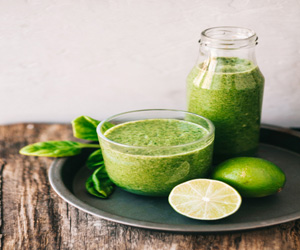 Physical wellness is often the aspect of holistic health that people are most familiar with. It encompasses regular exercise, a balanced diet, and adequate sleep. Physical wellness aims to keep the body in optimal condition, making it less susceptible to illnesses and promoting longevity.
Physical wellness is often the aspect of holistic health that people are most familiar with. It encompasses regular exercise, a balanced diet, and adequate sleep. Physical wellness aims to keep the body in optimal condition, making it less susceptible to illnesses and promoting longevity.
Exercise is not just about maintaining an ideal weight; it also has profound effects on mental health. Regular physical activity can reduce stress, improve mood, and boost self-esteem. A holistic approach to physical wellness also includes practices like yoga and meditation, which promote flexibility, balance, and inner calm.
Mental And Emotional Well-Being
Mental and emotional wellness are essential components of holistic well-being. Our minds are powerful, and the thoughts and emotions we experience can significantly impact our overall health. Stress management, mindfulness, and positive thinking are integral to this aspect of holistic wellness.
Practices like meditation and mindfulness allow us to become more aware of our thoughts and feelings, fostering emotional resilience and a greater capacity to handle life's challenges. Cultivating emotional intelligence can improve relationships and enhance our overall quality of life.
Social Relationships
Our connections with others play a vital role in our well-being. Holistic wellness emphasizes the importance of nurturing healthy relationships. Strong social connections contribute to a sense of belonging and emotional support, which can help us navigate life's ups and downs.
A Guide To Healthy And Inclusive Eating
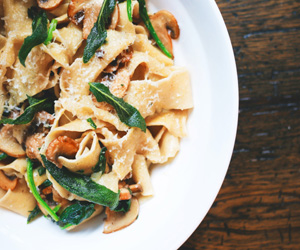 Religious And Cultural Practices: Many people adhere to specific dietary guidelines dictated by their religious beliefs or cultural traditions. For example, Muslims observe halal dietary laws, while Hindus may avoid beef due to religious beliefs.
Religious And Cultural Practices: Many people adhere to specific dietary guidelines dictated by their religious beliefs or cultural traditions. For example, Muslims observe halal dietary laws, while Hindus may avoid beef due to religious beliefs.
Health And Lifestyle Choices: Some people adopt dietary restrictions as a part of a healthy lifestyle. This includes vegetarianism, veganism, or gluten-free diets, often motivated by environmental concerns, animal welfare, or gluten-related health issues like celiac disease or gluten sensitivity.
Medical Conditions: Certain medical conditions, such as diabetes, require dietary restrictions to manage blood sugar levels effectively. Patients with kidney disease may need to limit their potassium and phosphorus intake.
Motivations Behind Dietary Restrictions
Health: Many dietary restrictions are motivated by health considerations. For example, a low-sodium diet can help manage high blood pressure, while a low-carb diet can be beneficial for individuals with diabetes.